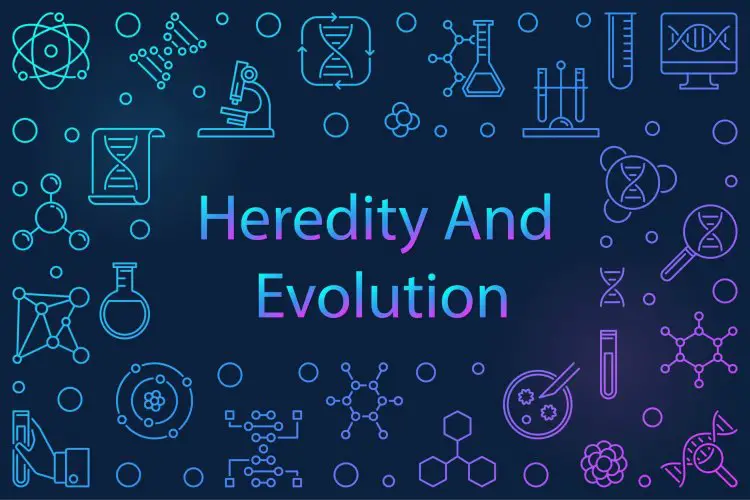Heredity And Evolution
Heredity and evolution are fundamental concepts in biology that explain how traits are passed from one generation to the next and how species change over time. Heredity refers to the transmission of genetic information from parents to offspring through genes, which are segments of DNA responsible for various traits. Evolution, on the other hand, is the process by which species undergo changes over long periods due to variations in traits, natural selection, and genetic mutations. These evolutionary changes can lead to the development of new species and adaptations to different environments. Together, heredity and evolution help us understand the diversity of life on Earth and the mechanisms behind the development of new traits and species.

ACCUMULATION OF VARIATION DURING REPRODUCTION
During reproduction, variations (or differences) in traits accumulate through several simple processes. When organisms reproduce, especially sexually, they mix their genes to create offspring. This mixing happens in a few key ways:
-
Genetic Mutations: Sometimes, there are small changes in the DNA, which can create new traits or variations in existing ones.
-
Gene Recombination: During the formation of eggs and sperm, genes from both parents are shuffled and combined in new ways. This means each offspring gets a unique mix of genes.
-
Independent Assortment: When eggs and sperm are made, the chromosomes (which carry genes) are randomly sorted into different cells. This randomness adds to the variety of traits in the offspring.
These processes ensure that each new generation has a mix of traits from both parents, leading to a lot of genetic diversity within a population. This diversity is important for evolution because it helps populations adapt to changing environments over time.
HEREDITY
Heredity is the process by which traits and characteristics are passed from parents to their offspring through genes.
-
Genes and DNA: Traits are controlled by genes, which are segments of DNA (deoxyribonucleic acid). DNA is the molecule that carries genetic information in cells. Genes determine everything from eye color to blood type.
-
Inheritance: During reproduction, offspring receive half of their genes from their mother and half from their father. These genes combine to form the offspring’s unique set of traits.
-
Genotype and Phenotype: The genotype is the genetic makeup of an organism (the specific genes it has), while the phenotype is the observable traits or characteristics (like height or hair color) that result from the interaction of the genotype with the environment.
-
Dominant and Recessive Traits: Some traits are dominant, meaning they can mask the presence of other traits (recessive). For example, if a child inherits a gene for brown eyes (dominant) from one parent and a gene for blue eyes (recessive) from the other, the child will likely have brown eyes.
-
Punnett Squares: These are tools used to predict the possible combinations of genes and traits that offspring might inherit from their parents. They help visualize how different traits might be passed on.
Overall, heredity explains how traits are inherited and provides the foundation for understanding genetic variation and the principles of inheritance.
What's Your Reaction?





















